- Administrator
- Albums and Singles
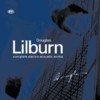 Douglas Lilburn was already an award-winning composer when he turned from conventional music to focus on electronic music, founding New Zealand’s first electronic music studio at Victoria University of Wellington in the late 1960s. The three CDs and the DVD comprising this collection contain many valuable pieces that highlight Lilburn’s contributions to the electronic form.
Douglas Lilburn was already an award-winning composer when he turned from conventional music to focus on electronic music, founding New Zealand’s first electronic music studio at Victoria University of Wellington in the late 1960s. The three CDs and the DVD comprising this collection contain many valuable pieces that highlight Lilburn’s contributions to the electronic form.
Lilburn was particularly interested in evoking New Zealand’s natural environment, which he does through meditative drones. Using electronics to replicate concrete elements like ocean waves and birds, he also adds conceptual touches like the stretched tones mimicking bird flight in “Sounds and Distances.” Although he doesn’t often use voices in his work, when he does they are among his better pieces. One of the best tracks is “The Return,” which uses a Maori woman’s voice as a compositional element before turning to a man’s recitation of Alistair Campbell’s poem of the same name.
In addition to his more formal works, included here are his studies documenting his experimentation with singular ideas or techniques, such as the two separate groups each collectively entitled “Five Toronto Pieces,” which were recorded six years apart, as well as a soundtrack for a dance sequence. The DVD contains a few all-too-short excerpts from films that find Lilburn demonstrating his techniques and talking about his ideas, two songs reproduced in four channels as he originally intended, and an illuminating audio interview.
One commonality among these different musical projects is the meticulousness with which they were created. Lilburn struggled with the primitive equipment he had at his disposal and his poise and patience are evidenced in every recording. Rather than settling for unpredictable effects, he took the time to study the technology in depth and harness it to his own end. There are a few places in the collection that hit an introspective plateau and lose some momentum, but for the most part each disc is arranged non-chronologically in a way that balances the different dynamic levels found in Lilburn’s works. I found the third disc to be the most consistently rewarding, yet the other two discs hit peaks just as high.
samples:
Read More
- Administrator
- Albums and Singles
 For the sixth Numero release, the group plunges the archives of music from the small Central American nation of Belize, a country which tends to associate itself more with the Carribbean countries than the surrounding Mexico and Guatemala and nearby Honduras. Its disco, R&B, and funk captured here more resembles reggae and soul influenced tourist-friendly party music.
For the sixth Numero release, the group plunges the archives of music from the small Central American nation of Belize, a country which tends to associate itself more with the Carribbean countries than the surrounding Mexico and Guatemala and nearby Honduras. Its disco, R&B, and funk captured here more resembles reggae and soul influenced tourist-friendly party music.
When the songs aren't instrumental, like the opening "Disco Connection" by Lord Rhaburn (which is obviously a disco tune done by a fully rounded group) or the downtempo dubby version of the Godfather theme by The Professional, they're sung in English. The lyrics are simple, whether it's the croon of American expatriates in "The Same Old Me," ("I'm your man and you're my woman" - yeah, it's simple and sounds strikingly familar/derivative, but it's done with so much conviction, I can't help but fall in love) one of three compilation appearances by The Web, or the simple refrains from "Shame Shame Shame" and "Can't Go Halfway" by the Harmonettes.
Once again Numero must be commended for their quality choices. There isn't a weak song on here. Jeff Lipton once again has a hand in restoration of the sound and the fidelity is remarkably fantastic. The accompanying booklet of stories briefly touches on what is known about some of these groups: the membership, the pockets of fans in North America, their waning success with the death of vinyl, and, of course, the proverbial problems with distribution. It briefly talks about the importance of 1961's Hurricane Hattie, a storm which levelled the city and forced people to leave and, in turn, bringing music back after traveling abroad. Also included are a number of scans of the records' picture covers, images of musicians when available, but I'm once again a little let down by the lack of time reference for the music.
With only 16 songs, the collection doesn't even hit the 60 minute mark. It's a sign of how little there actually is to be found from this lost scene.
samples:
- Jesus Acosta and the Professional - Guajida
- Nadia Cattouse - Long Time Boy
- The Web - The Same Old Me
Read More
- Administrator
- Albums and Singles
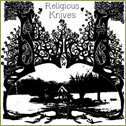 Beefed up to a more rhythmic trio for this release, Religious Knives do their best work so far as part of the so far untouchable No Fun Rotten LP series. Mouthus’ Nate Nelson joins Maya Miller and Mike Bernstein in bringing a secular adhan audience to a matinee horror performance.
Beefed up to a more rhythmic trio for this release, Religious Knives do their best work so far as part of the so far untouchable No Fun Rotten LP series. Mouthus’ Nate Nelson joins Maya Miller and Mike Bernstein in bringing a secular adhan audience to a matinee horror performance.
These three players combine dissimilar elements to create something outside of even the most ‘-‘ and ‘/’ peppered genre classification. Bernstein’s guitar initially seems like it isn’t even there but the more I listen the more it seems to be the glue between the synth melodies and the drums. It’s most easily identified in "Electricity and Air"s rhythmic feedback gonglike sounds but plays a low-key low-end role throughout.
It may be the percussion that swells and morphs throughout Side A’s single track "Bind Them" but it’s the organ notes that takes most of my attention with it. Like a heavens searching theme from some old school sci-fi there is a spacey serenity that drags a Middle Eastern melody into the lower atmosphere. The melody progresses through velvet curtain aural penny dreadfuls to the sounds of heavy winds through desert shacks. The accompanying analogue rhythmic patter weaves new patterns making intermittently distracting tunnels of counter melodies.
The second side flips the first side’s priorities this time bringing the beats into prominence. "Electricity and Air" might rely on first impressions with Maya Miller’s elongated synth pieces but the drumming soon takes over. Nate Nelson begins to flow more easily sounding more organic and heavier as his factory found drumming gets lower, freer and deeper. Loosely played strings of bells and chain percussion emphasize the forest campfire at midnight chants that moan just under the comprehension radar. The addition of Nelson and his drums undeniably take the Religious Knives mixture of synthesized prescription drones up a level. As the beat slows down like the last ebb of blood from shattered skull to pavement the guitar follows. Strings are clawed creating an engorging sharp-toothed muddle of sound that fades into black.
The only minor let down is the lack of Maya Miller artwork, but after a few listens to this release the bleak Rorschach look really suits it. There is plenty to read into and get out of the expanded Knives experience.
samples:
 
Read More
- Administrator
- Albums and Singles
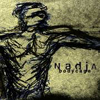 Nadja is the heavy guitar-driven project between Aidan Baker and Leah Buckarell. Listening to the overloaded intensity and slow, but forceful grit is like trying to stand firm while being deluged with gigantic buckets of shockingly cold water.
Nadja is the heavy guitar-driven project between Aidan Baker and Leah Buckarell. Listening to the overloaded intensity and slow, but forceful grit is like trying to stand firm while being deluged with gigantic buckets of shockingly cold water.
Bodycage is their second release, originally sold as a CD-R which unsurprisingly quickly sold out. This version on Profound Lore presents the original in its entirety plus two bonus (unlisted) pieces. This isn't improvised noise or 20 minutes of drone, these are actual songs which just happen to open, build, and decay over long periods of time. At its prettiest, Nadja's music is creepy enough to be a B-side from an '80s group that was just uneasy enough to get cut from the LP and at its ugliest, the duo's music unfolds like the score for a bloody horror film. Likewise, Bodycage plays out like a story.
The curtain rises at the end of the story, like one of those mysteries that opens with the end and then works backwards to find out how everybody died or something. "Clinodactyl" begins the album with the buzzing system hum of instruments plugged in. While it doesn't seem long until the drums begin and melody makes itself known, it's actually been nearly 10 minutes of fuzz and distortion. Time passes remarkably quickly, which is probably why their songs stretch the lengths they do, and by the time the song is in full swing—around the 12 minute mark—voices echo while Baker and Buckarell play a patient and gorgeous melody off each other. It ends abruptly and some jagged guitar riffs make an almost seamless segue into "Autosomal," which is almost like part two of the epic begun with "Clinodactyl." This song is a lot more violent and meanacing, with what seems more like male vocals as opposed to what could have been female vocals from the first song. The vocals are so distorted, distraught, and buried that it's almost impossible to tell. It builds and decays and there is truly a break before the final part (of the original album).
"Ossification," the other +20 minute piece on the album is a return to the formula from the beginning: open quiet, let it build about 10 minutes, add drums and begin melodic development. This one is more for the dronesters than the tunemasters like myself. While I like it, the absence of a well-defined driving melody simply doesn't take me to the levels during the climax of "Clinodactyl." The music essentially stops and the effects play each other out until they decay into silence.
The two bonus cuts are okay but do sound like "add-ons" to the concept of the rest of the album. The first is a rather noodly quiet bit of system noise and effects for about six and a half minutes before 90 seconds of silence, it does very little for me. The second is another +10 minute piece with a long opening and a crashing drums and driving melody, similar to the first and third songs on Bodycage, but a lot brighter sounding. I think I actually prefer this song over "Ossification," but when you're dealing with a reissue, I'm more satisfied to hear the original in its original form so I wouldn't have recommended taking "Ossification" out.
samples:
Read More
- Administrator
- Albums and Singles
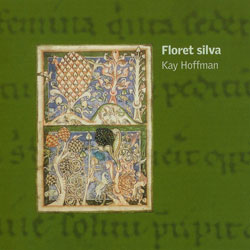 Floret Silva is a pure 70s art rock project, from concept to execution, a progressive folk adaptation of the 13th-century medieval songs collectively known as the Carmina Burana. Remarkably, it does not collapse under the weight of its own concept, and holds up quite well nearly 30 years after its recording.
Floret Silva is a pure 70s art rock project, from concept to execution, a progressive folk adaptation of the 13th-century medieval songs collectively known as the Carmina Burana. Remarkably, it does not collapse under the weight of its own concept, and holds up quite well nearly 30 years after its recording.
When people remember 1970s art rock as turgid and boring—groups of shaggy, acid-addled Tolkien enthusiasts wanking on synthesizers, carrying on with the pretensions of classical or avant-garde musicians—they aren't usually talking about albums like this one.
Robot Records isn't usually in the business of reissuing lost 70s prog classics, so this seems to be a strange entry in their discography. Perhaps this reissue was motivated by the fact that Kay Hoffman recruited members of revered Italian experimental progressive group Pierrot Lunaire (also named after a song cycle), including the stunning vocals of Jacqueline Darby. Records like 1977's Gudrun have become holy grails for collectos of obscure European prog rock, incorporating an almost absurd variety of disparate musical approaches into a Faust-like patchwork that recalls the later work of HNAS and Nurse With Wound. Perhaps not surprisingly, Pierrot Lunaire earned their requisite spot on the famous NWW influence list, and Christoph Heeman of HNAS assists with the digital transfer of this reissue.
This is not to suggest, however, that Floret Silva shares the cracked eclecticism typical of Pierrot Lunaire's work. In fact, nothing could be further from the truth. If there are any music touchstones for this album, it would be nearer to the mark to invoke the names of John Renbourn, Jan Dukes de Grey and especially Current 93. I was immediately reminded of Michael Cashmore's compositional style when listening to "Quot Sunt Horae," and I got the same C93 spine tingle from the brief, spooky voice piece "Exorcismus." For this album, composer and arranger Hoffman has wrangled a group of gifted musicians noted for their experimental adventures, forcing them to hone in on a particular aesthetic, a conceptual cycle of songs that feel as if they are each movements of a single piece. The instruments played on the album closely match the 70s psych-folk canon - bouzouki, recorder, clavinet, flute, organ, acoustic guitar - and the conscious references to medieval musical modes is far from unique for this time period. What ultimately sets this album apart from its stylistic cousins is the composition itself, a unique and magical set of well-orchestrated musical settings that fit the text perfectly.
The Carmina Burana is a time-tested source of musical inspiration. Carl Orff's 1937 choral version is probably one of the most famous and overplayed classical pieces of all time. Other versions by Ray Manzarek and Philip Glass, or German band Corvus Corax, have not been as successful, for very good reasons. Hoffman's version evokes the text so beautifully that I soon ceased comparing her version to Orff's. Hoffman's unorthodox combinations of ritual drumming, stately medieval chanson melodies, mood-enhancing drone, and the amazing multitracked vocals of Jacqueline Darby, are mesmerizing. This is without even mentioning the brief sound effects suites that unexpectedly intrude into the piece, subtly and hypnotically dislocating the music, placing it amidst a world of hallucinatory enchantment. In a way, this newer, druggier version gets across the extremely sensual, paganistic intentions of Carmina far better than previous versions, giving newly pscyhedelic dimensions to lines such as: "How I am longing and not knowing why/I look at myself/not recognizing myself anymore."
The music is a bright amalgam of jazz rock tropes and medieval flourishes, and rarely suffers from overloaded arrangements, Hoffman's background in minimalist composition serving her well. Genius touches, such as the bassoon solo recorded outdoors at night on "Intermezzo (Fagott Sommer Nacht Promenade)," or the gently echoing water effects that add a tangibly magical texture to "Tempus Instat," elevate the album from interesting relic of a bygone era to something that is more relevant now than in its own time. For all of the aspirations of neo-medievalists such as Sol Invictus or Fursaxa, I've rarely heard something as poised and accomplished as the music on Floret Silva. This album is like the prettier, more elegant companion piece to Nico's somber medieval explorations on The Marble Index; less emphasis on mood and drone, more on composition and virtuousity, but no less fascinating a result. The notion of a series of progressive folk songs sung in Latin doubtless raises a red flag for most discriminating listeners but Floret Silva completely avoids the usual pitfalls plaguing such ambition and audacity. It is a timeless album that has luckily been rescued from the clutches of obscurity.
samples:
Read More
- Administrator
- Albums and Singles
Read More
- Staff
- Albums and Singles
Read More
- Administrator
- Albums and Singles
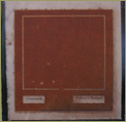 Graveyards are the most organic and traditionally structured of all of John Olson’s (Wolf Eyes) side projects. With improvisational jazz relying more these days on chemistry than the highs and distances of what’s left to explore, this trio are consistently drawing me ever closer, and deeper, to the heart of their sound.
Graveyards are the most organic and traditionally structured of all of John Olson’s (Wolf Eyes) side projects. With improvisational jazz relying more these days on chemistry than the highs and distances of what’s left to explore, this trio are consistently drawing me ever closer, and deeper, to the heart of their sound.
This delicate looking one-sided vinyl sees the trio of horns / reeds, percussion and cello blend themselves into one nearly fourteen minute distillation of minds. Very surprisingly for a Graveyards release this seems to take a little while to warm up, and it’s about two and a half minutes in before everyone seems to be on the same page. Most of Ben Hall’s percussion work sounds more like charnel house floor scraping than anything to do with keeping tempo. But when he does pick up the traditional sticks it’s a slow loose skinned walk, a rhythmless funereal paced New Orleans summons.
This single piece is split by several silent lulls creating gaps of ever lengthening shadows. These aren’t tension creators or breathing spaces but take the shape of another player in Graveyards’ unsettling mix. The overall aura is an unfriendly but not aloof one. It doesn’t take long to become accustomed to the language and interplay between the sax and cello. Hans Buetow abuses the cello in a typically un-cello fashion, the staccato slides stabbing into and pushing against the other instruments. Alongside Stephen Thrower (Cyclobe / Coil), John Olson remains one of the most ignored and underrated free horn players around today. His lines weep and roar, taking the lead several times but never centre stage. At times it even sounds positively lonesome.
Vulture’s Banquet is all about textures and spaces in the sound, and unlike some free playing groups I don’t need hours of close listening study to hear the magic. This is instant, first listen deep stuff and this proves the chemistry is still going strong.
samples:
 
Read More
- Administrator
- Albums and Singles
 Dwayne Sodahberk's latest for Tigerbeat6 pushes some of the glitchy electronics with which the artist is often associated to the background, allowing the simple pop melodies to rise to the fore. Though perhaps less experimental than some of his other work, Cut Open wins by being direct.
Dwayne Sodahberk's latest for Tigerbeat6 pushes some of the glitchy electronics with which the artist is often associated to the background, allowing the simple pop melodies to rise to the fore. Though perhaps less experimental than some of his other work, Cut Open wins by being direct.
Honest pop music is tough to come by, especially in an age where every stylistic tick is played for some meta-textual inside joke that will usually cease to amuse anyone after six months. When I find a record with an honest but still fresh approach to squeezing digital production into the form of a pop song, it's always exciting. Too often the people with the skills to pull something like this off are too busy hiding behind not-so-clever references and shorthand for the work of other artists that they only seem to understand on a very superficial level.
Sodahberk captures the detuned, bedroom-produced pop sound in three minute slices about as well as anyone. The off-kilter instrumentation and touches of digital manipulation keep songs (that might otherwise sound too straightforward) a little off balance. Sodahberk always seems to be teetering on the line between needing to tune his instruments a little better and playing them just well enough that the sour notes seem necessary. The vocals are just burried enough to be mysterious, but not so overwhelmed as to be lost in the mix. And all of this is the difference between using an an imperfect aesthetic to create an atmosphere and simply relying on that aesthetic because it's all that you can pull off. It's easy for people to crank out tunes without so much as caring if strings are tuned, if drums are recorded properly, or if songs are mixed with an ear for balance. The production on Cut Open reveals that Sodahberk's choices are not only intentional—they pay off.
I imagine that work like this will eventually inspire a wave of commercial pop producers to try and create damaged but still polished songs for airheaded singers and posterboys. It's reasonable to imagine producers for pop albums dropping a record like this in an engineer's lap saying "I'm looking for THAT sound, but radio-friendly," and when that day comes, I assume that people like Sodahberk will already be on to something else. Luckily this album has guts and depth and the kind of authenticity that a $20,000 lock out rate can't buy.
samples:
Read More
- Administrator
- Albums and Singles
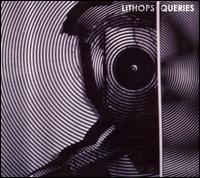 Anticipating a new full length, Sonig reissues every side of non-album Lithops material on one disc, with unreleased tracks from the same time period. At least three of these singles have been long out of print, and as bittersweet as it is to see my $2 copy of “Tubino-see-through / Filterabend” (Static Caravan 1, clear-vinyl, hand-stamped sleeve, decal insert) swiftly devalued, having the rest of these immediately available is almost better than a new record from Jan St. Werner.
Anticipating a new full length, Sonig reissues every side of non-album Lithops material on one disc, with unreleased tracks from the same time period. At least three of these singles have been long out of print, and as bittersweet as it is to see my $2 copy of “Tubino-see-through / Filterabend” (Static Caravan 1, clear-vinyl, hand-stamped sleeve, decal insert) swiftly devalued, having the rest of these immediately available is almost better than a new record from Jan St. Werner.
Dating from between ’96 and ’98, these tracks recreate golden years for the artist: the maturing of his duo Mouse On Mars, the beginnings of Sonig, a time when experimentation seemed to come as a natural tapering of the sound MOM made their own the day they first propositioned Too Pure with “Frosch”: a space-age tropical dub ambient, loosened an de-kitsched. With Lithops, St. Werner funnels the minor moments of MOM psychedelia through the bit machine and comes out with a shrouded, hermetic version, something breakable but ineffable in a swirl of binary infinites: the holy intervals of concrète sound dubbed, stabbed and guessed-at via synthesizer, feedback and cheap effects.
‘Kraut’ in an inherent lushness or a tendency toward organic motifs and phrasing only, early (and especially late) Lithops is a digital engine, meant for an audience with an ear for the graininess and the incomplete moments of a record like Vulvaland. Queries comes closer to MOM’s pastoral oddity Glam, or the outer bits of Instrumentals, alternating slow, wormy dub with the planetary drones and cries of feedback towards a backward psychedelic, lonely and vulnerable. This should be essential listening for any casual fan of MOM; it is a bare, twitching product where grooves and moods are scraped at, traversed, never noodled, just powerfully suggested in a cosmic dub concrète root exploration.
samples:
Read More
- Administrator
- Albums and Singles
 Maybe it’s a bit too early to call, but right now I’d say it is safe to say that Stay Afraid, the latest release from Brooklyn noise-rockers Parts and Labor is the first great fist-in-the-air rock record of 2006. With all the instruments jacked up within an inch of their lives, the band goes flat out on every song here, and comes up victorious for the most part.
Maybe it’s a bit too early to call, but right now I’d say it is safe to say that Stay Afraid, the latest release from Brooklyn noise-rockers Parts and Labor is the first great fist-in-the-air rock record of 2006. With all the instruments jacked up within an inch of their lives, the band goes flat out on every song here, and comes up victorious for the most part.
Opener, “A Great Divide,” is perhaps the most epic the group has ever gotten, with crunchy guitars and battered drums nearly drowning out bassist/vocalist B.J. Warshaw, who gives his all into fighting back the musical onslaught. Elsewhere, chintzy bits of synthesizer and ragged tunefulness which reminds me of Husker Du appears, adding an interesting counter-point to sonic onslaught. “New Buildings” opens sounding like a bit of discarded Lightning Bolt before opening up into a passionate rave up that sounds as much noise rock as it does SoCal punk. While the rockers on Stay Afraid are awesome, sternum shaking jolts of pure sweat and aggression, it would have been beneficial had the band decided to throw in a few longer tracks that show the true range of the group.
Despite this one caveat, the album as a whole is as solid as a Mack truck. “Death” begins with some distorted synthesizer swells before a high pitched squeal of feedback disrupts the calm and the song launches into a breakneck chorus. Warshaw’s voice is covered in a shroud of digital effects and distortion, recalling at times the distant warped vocals of former Jesus Lizard front man David Yow. Ultimately this works to the bands advantage as his voice becomes another facet of the overall sound. Stay Afraid is an endurance test of a record, not in terms of unpleasantness, but in terms of the pace of the record. One can see the band literally dropping at the conclusion of the closer “Changing of the Guard,” and while listeners might too, they shouldn’t be disappointed.
Like climbing stairs, grade school physical fitness tests, and triathlons, Stay Afraid is the kind of endurance test that will leave you happy about the ass kicking it hands you.
samples:
Read More

